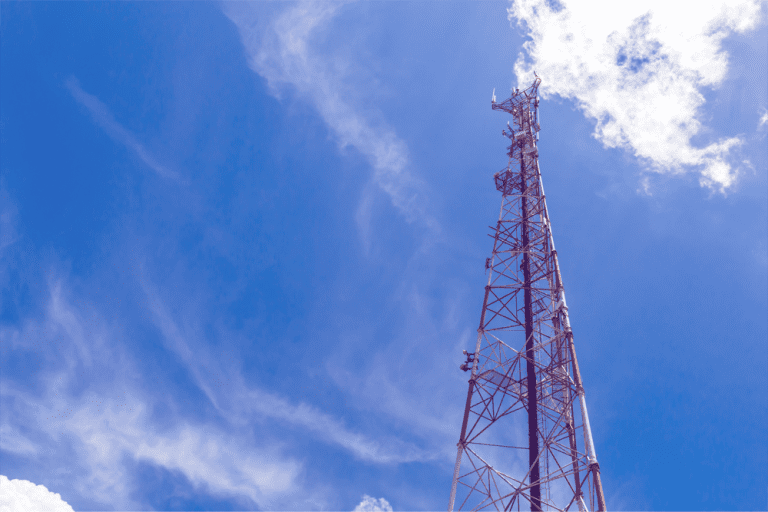
5G and Location Intelligence: Drive Telco Growth with Trusted Insights

Demand for telecommunications bandwidth is exploding. Consumers are clamoring for high availability and instant connectivity to support streaming audio and video, data-intensive applications, and more. Smart devices are proliferating – a trend that will undoubtedly continue as connected vehicles, wearables, and IoT sensors gain widespread adoption. 5G telco technology will make it possible to deliver on the promises that such products and services have to offer, but only if telecom companies can build out the necessary infrastructure rapidly and efficiently. 5G will require substantial new investments in expensive equipment. Moreover, this new technology comes with some unique challenges, making tower placement especially critical.

How can telecommunications companies optimize their existing and future 5G investments, ensuring adequate coverage while also avoiding overspending? The answer is in the smart use of location data and advanced analytics.
The 5G Challenge
The growth in demand for 5G bandwidth is expected to be especially high in urban centers, as 4G networks will be increasingly inadequate to meet consumers’ expectations. Orbis Research estimates that the 5G infrastructure market will grow to as much as $9.3 Billion by 2023 at an estimated CAGR of 48.2%. This is attributable to changes in consumer behavior and increases in software implementation on wireless networks and the expanded use of machine-to-machine communication.
Read our Whitepaper
Strategizing 5G Network Cell Tower Placement
As telecommunications companies scramble to get ahead of the competition in the race to deploy 5G, those that can make intelligent use of geospatial analytics will undoubtedly come out on top. If your organization is seeking to optimize its 5G network infrastructure rollout, download Precisely’s free white paper today.
This growth comes with some distinct technical challenges, though, because 5G telecommunications technology is fundamentally different from its predecessors in some important ways. It is a line-of-sight (LOS) technology, so it generally calls for numerous 5G towers, especially in dense urban areas. Receiving devices such as smartphones, vehicles, or machinery must have unimpeded line-of-sight visibility to tower locations. If network service providers are to provide fast and reliable connectivity in urban areas, they need to place 5G cell towers strategically. They also need a cost-effective methodology for tower placement that can ensure continued profitability.
5G’s LOS requirement demands that tower locations be determined using geospatial data and advanced analytics. Location intelligence offers critical data-driven insights about potential cell tower locations, including building locations, sizes, and elevations, as well as other structures and natural features of the surrounding landscape. With the right geospatial data, telcos can calculate an individual viewshed for each potential tower location and design an optimal 5G network to ensure they meet their customers’ needs and remain profitable at the same time.
Precisely’s Data-driven Approach to 5G Optimization
Precisely has created and deployed a proven methodology for the design and optimization of 5G networks. We make it possible to generalize data in a spatial context, delivering results that are easy to visualize and analyze.
Precisely’s process begins with a map of LiDAR elevation data and surface analysis which determines coverage areas for ground, buildings, and vegetation. This provides a valuable first step toward understanding potential impediments to line-of-sight visibility in the target area. Using geospatial analysis, we overlay that with road intersection data, mathematically derived local maxima, and viewshed analysis.

The resulting geospatial model is converted into a three-dimensional (3D) surface plot, highlighting those points that have a greater elevation value relative to the immediate surroundings. These locations serve as starting points for choosing potential tower sites because of their potential to cover larger areas without obstacles to LOS visibility.
Ideal tower locations are overlaid on a street map so that a complete spatial analysis can be performed. Engineers can lay out a viewshed map based on specific parameters, such as tower heights at 12 feet (4 meters), or a coverage radius of 300 feet (100 meters). The ideal design will minimize redundancy created by overlapping viewsheds while still ensuring that customers’ connectivity requirements are fully met.
Delivering on the 5G Promise Profitably
The idea of a data-driven approach to network design and optimization is certainly not new. For years, Precisely has been working with major telecommunications companies around the world to apply advanced data analytics to the challenges of infrastructure planning. As the world’s leader in location intelligence, we offer the most advanced geospatial analytics technology available anywhere. Data-driven network planning and optimization provide a clear path to working smarter, not harder.
As the rollout of 5G telecommunications technology moves forward, Precisely is now applying that vast experience with location data analytics and telco network design to the unique challenges of 5G telco.
The benefits of such an approach are not limited to simply optimizing coverage, though. As a closely regulated industry, telecommunications companies must also be mindful of federal regulations that can impact network specifications. Robust location analytics can also help telcos to address these requirements, such as Federal Communications Commission (FCC) Form 477 reporting. Government programs for rural area deployment are playing an increasingly important role in decisions relative to network design. Location intelligence helps engineers to plan and deploy network infrastructure in ways that will address those requirements as well.
With the right approach to geospatial analytics, companies can develop a keen understanding of locational accuracy and assess the need for network densification. They can develop a flexible deployment architecture to maximize coverage and prevent subscriber loss. They can accurately weigh the costs of specific potential tower locations with the benefits they deliver in terms of network coverage.
As telecommunications companies scramble to get ahead of the competition in the race to deploy 5G, those that can make intelligent use of geospatial analytics will undoubtedly come out on top.
If your organization is seeking to optimize its 5G telco network infrastructure rollout with telecommunications technology, download Precisely’s free white paper today, Strategizing 5G Network Cell Tower Placement.


